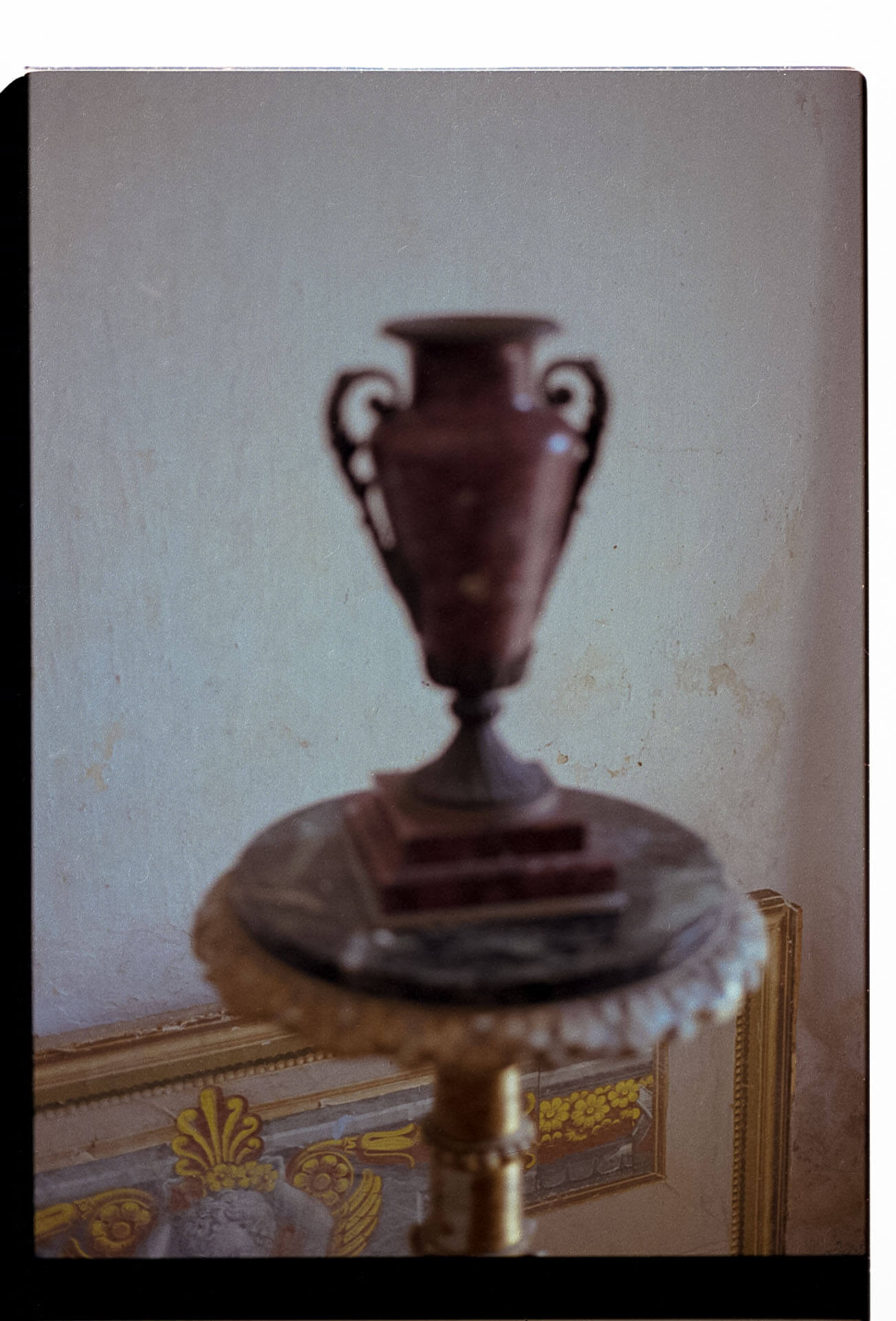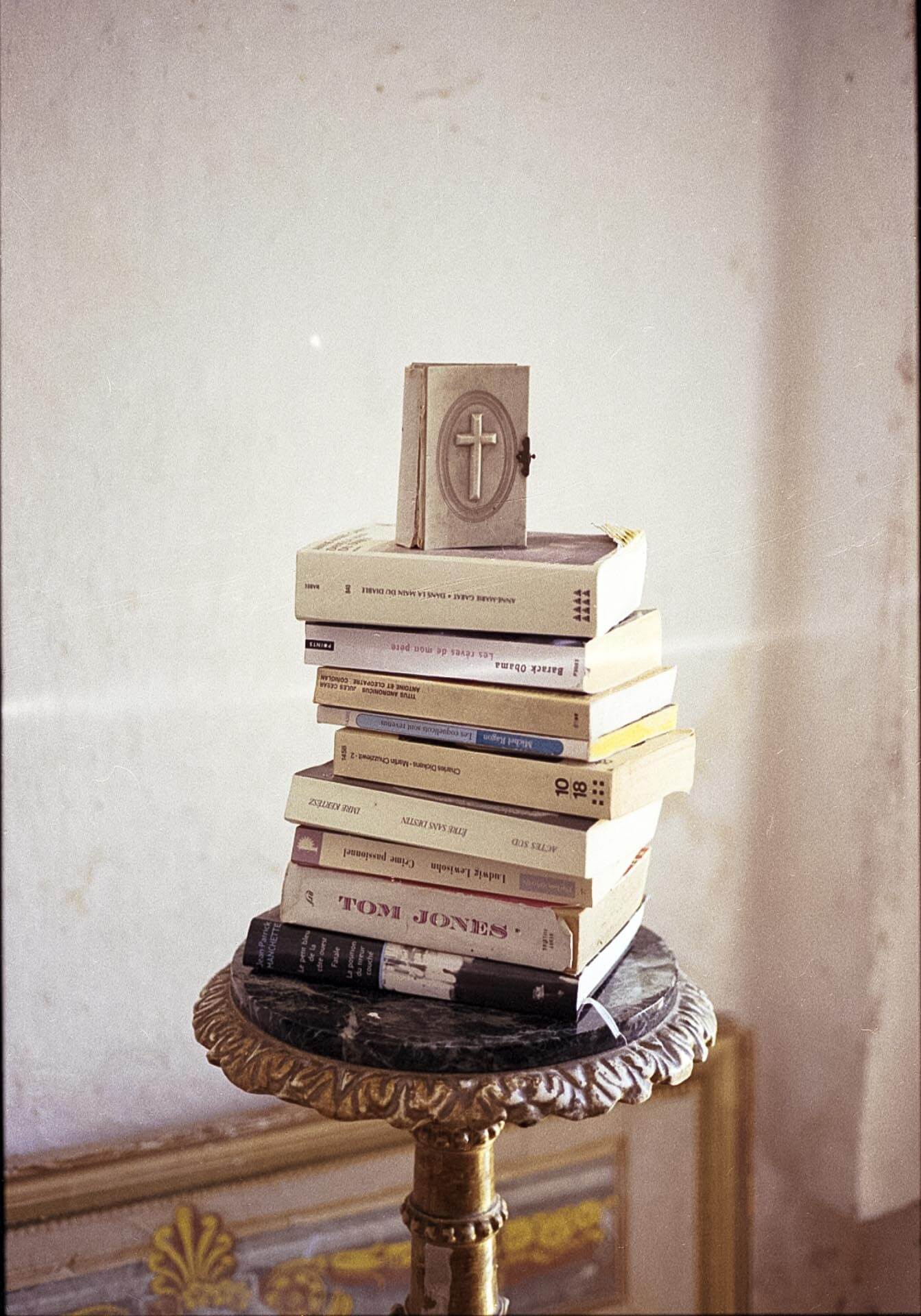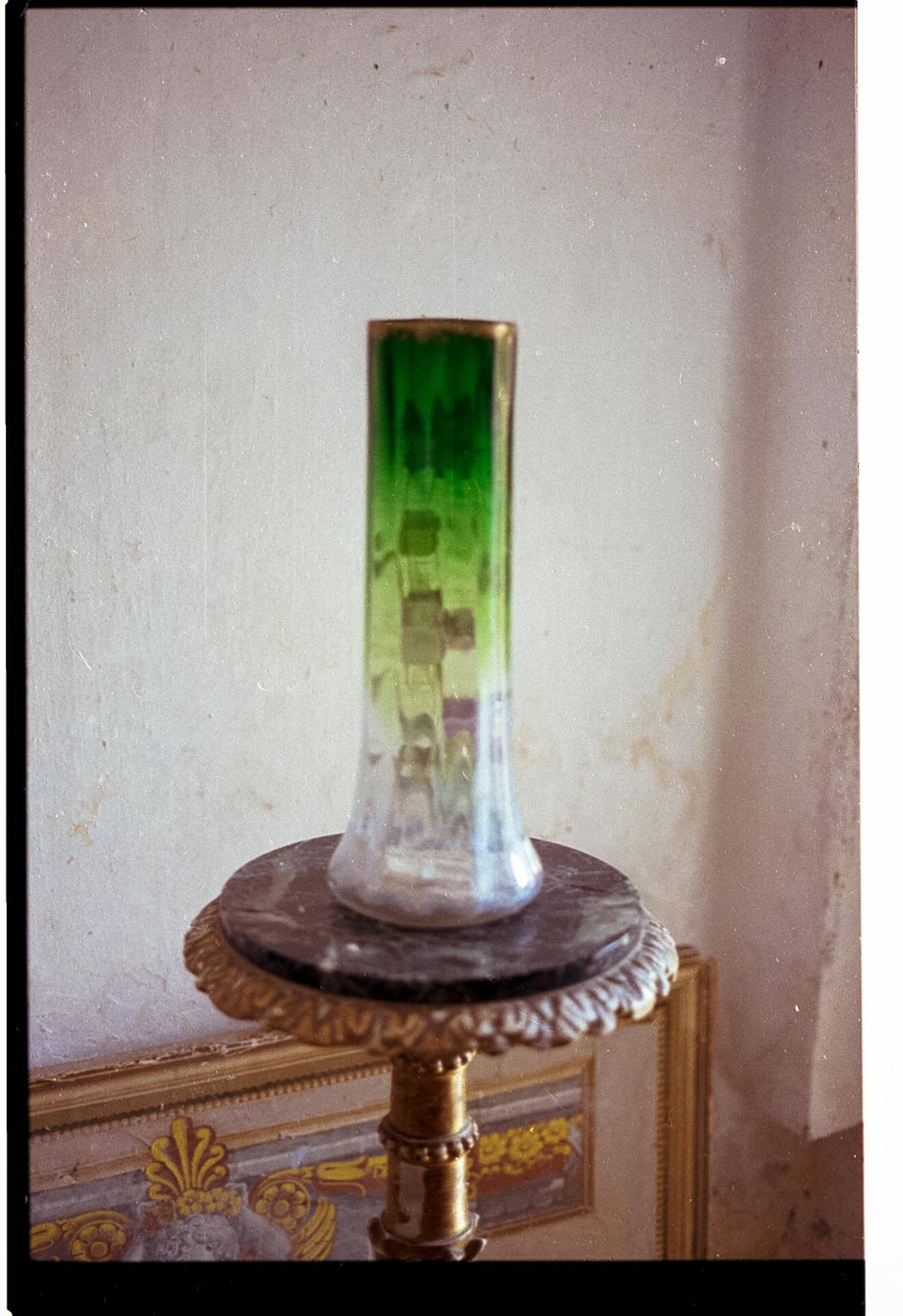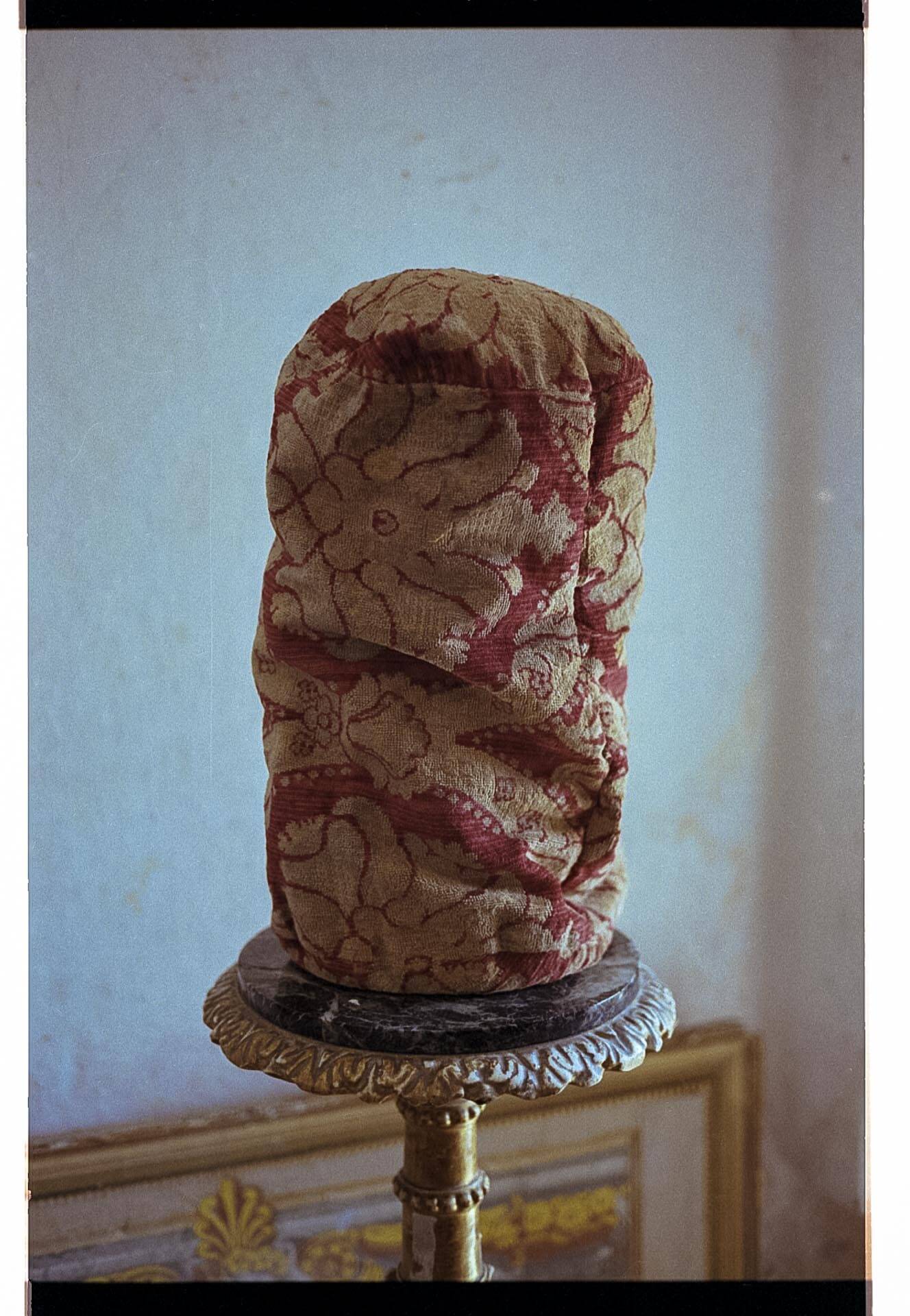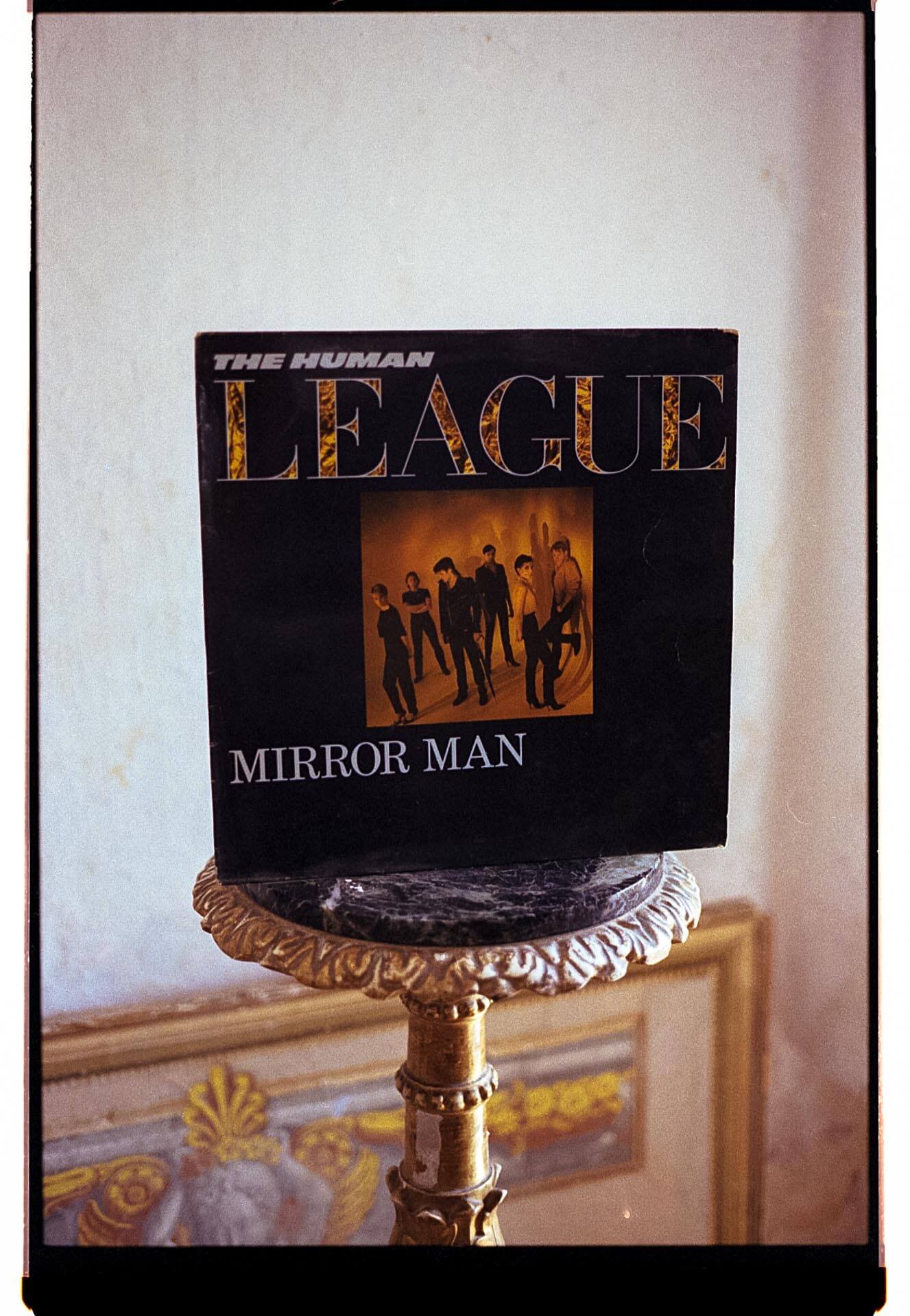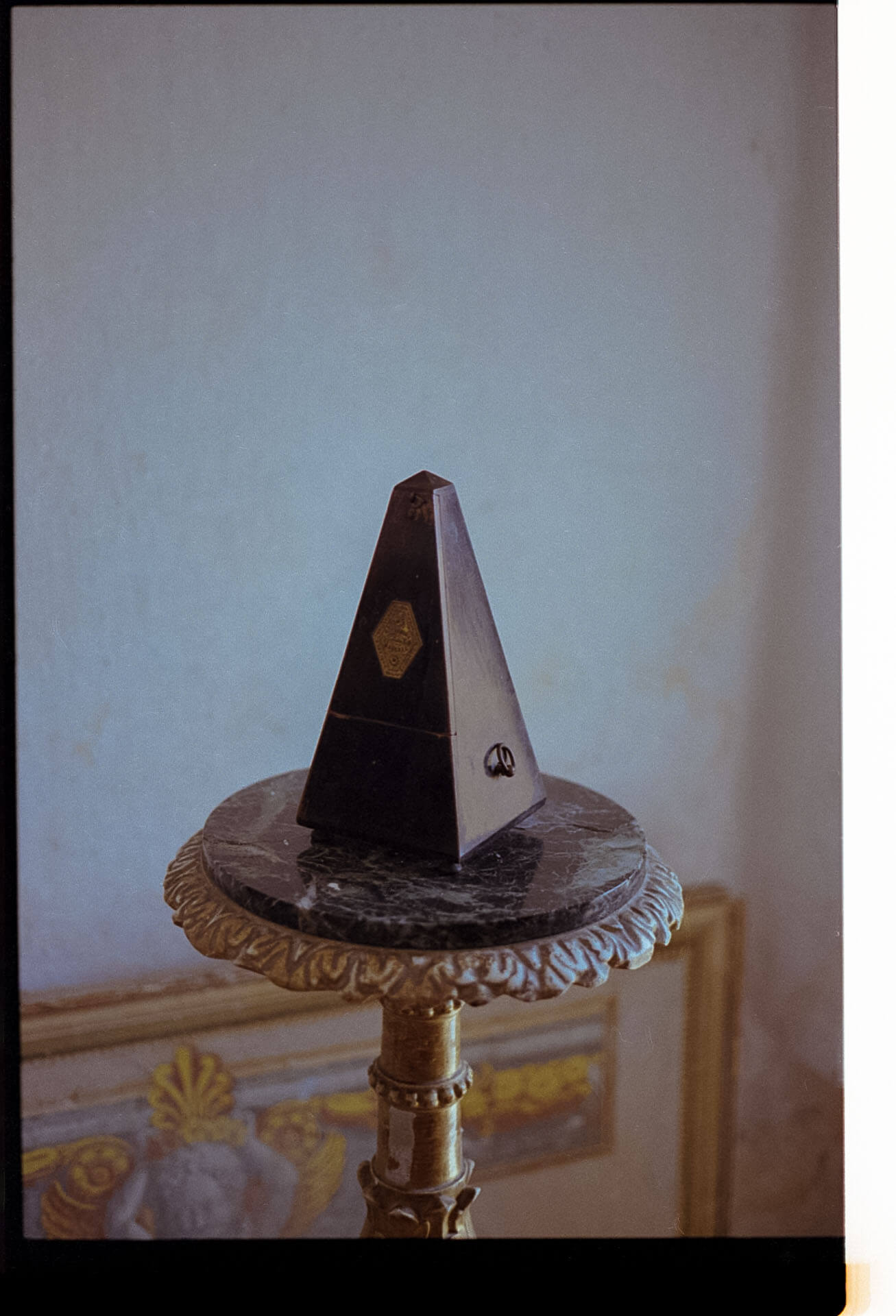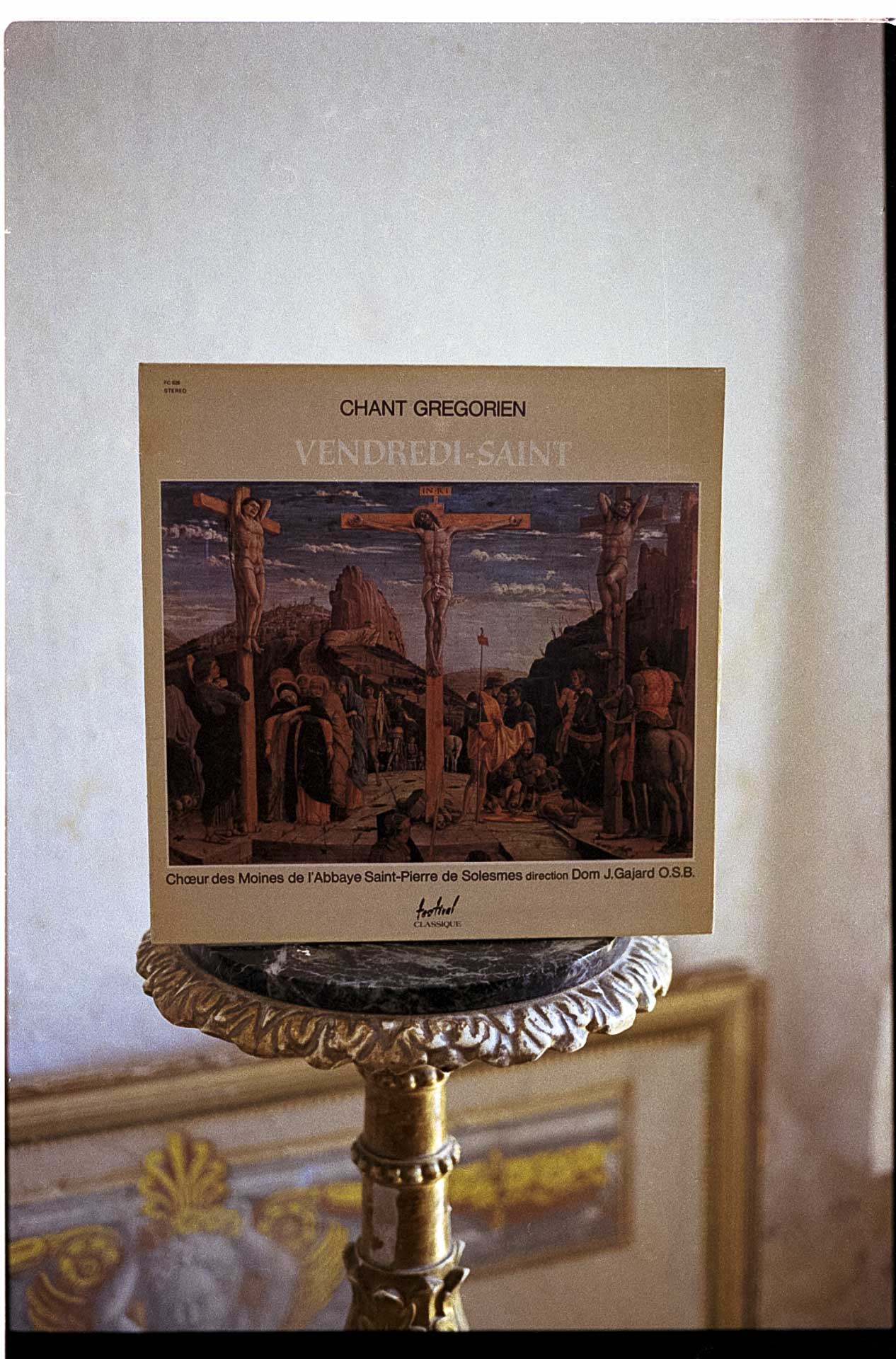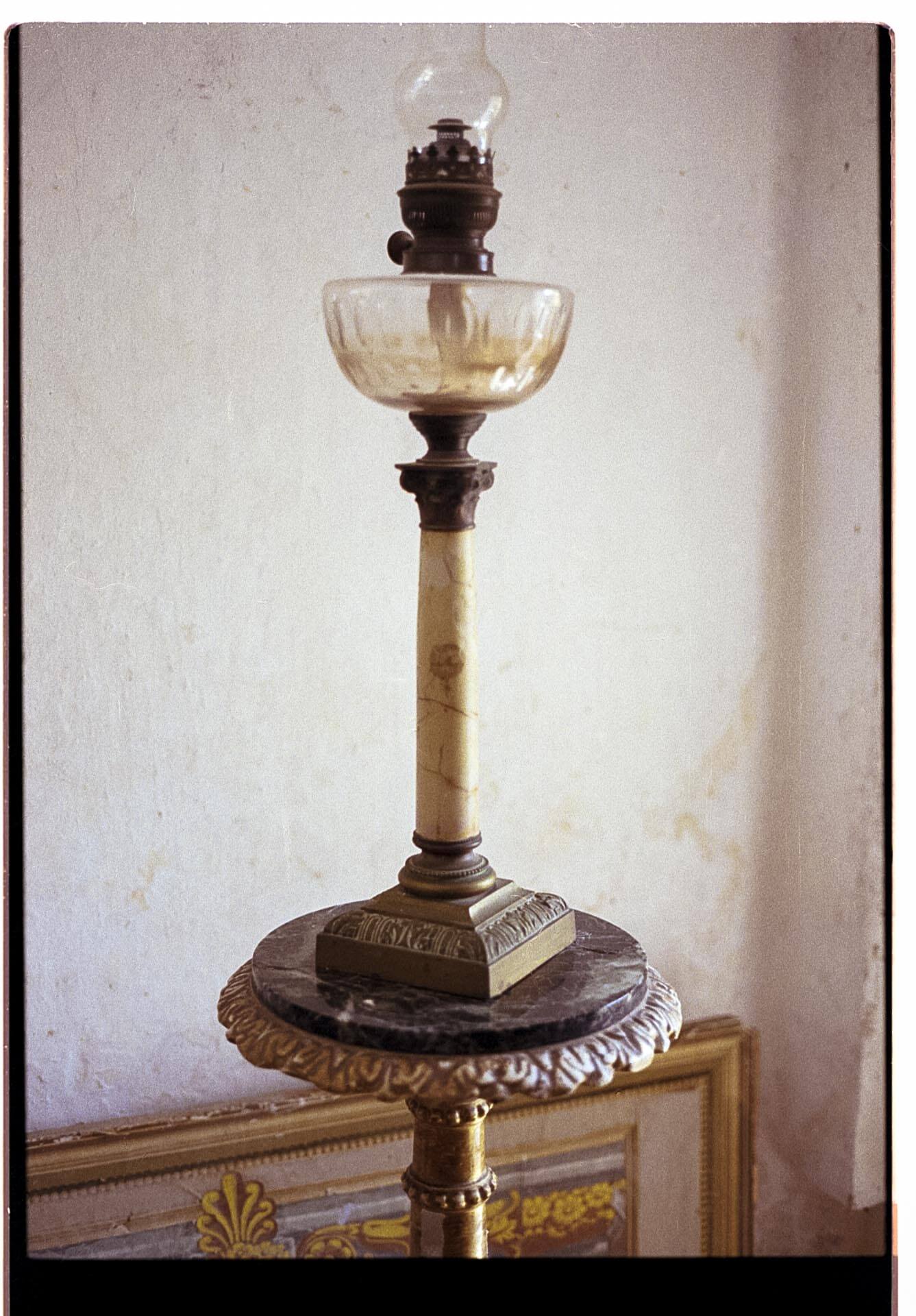Beyond the trembling plain of the northern Tyrrhenian and the intricate rocks which start the island, past the schist smoothed by the winds, oblivious to the crystalline rocks and granite of the west. After the abounding broom bushes and strawberry trees and the sequences of dwellings, fragile in appearance only, for centuries the garden of the Monastery of Saint Francis has pursued its vocation “to get as close to Paradise as possible”.1
The garden was started off by the architects who designed the monastery, while it was artists Candida Romero and Simone Dat, daughter and mother, with the help of their landscape historian friend Armand de Foucault, who drew it as it appears to us today and christened it with the title “The Gardens of San Francescu”. What could have been a maze plain and simple, is an angular womb where four matching gardens grow, arranged around a central source, the fountain. All the species – the wayfaring tree, laurel, oak, myrtle, clementine, mimosa, banana, peach, jasmine, bougainvillea, cherry and yucca – lead a similar existence to that of some human beings: maintaining their health, handing down gestures, aspiring towards a Eden-like state. In the meantime, they make themselves useful, offering clearings perfect for meditation and contemplation.
We had met in this privileged place, a place dear to me, with the excuse of a refreshing summer break, blessed by particularly benevolent stars. We were a lively fantasy between the cultivated geometries and the plush plateaus around Oletta. A moveable feast in a landscape which would be difficult to imagine in winter, difficult to imagine a second time.
Never diving in all together. Cooking sauce with sausages, to the delight of Louna, the neighbour’s little dog, when outside the sun is roasting just about everything, seas and emerged lands. Devising new habits, inventing journeys in the grass. Picking unripe figs, sculpting efficient flutes from reeds, drinking eggs that are still warm, attracting nature towards ourselves. Making up jokes. Feeling the freedom offered by the field, the other face of the garden, more unkempt and just as necessary. Trees and more trees, leaning to the left and right, leaves mocked by the south-west wind, front and back. Everlasting and incoherent realm of greens. Of course, on the horizon I could only see four pointed hills.
Delaying the crossing. Always tripping in the same place, not catching your breath, discovering a beehive making its way among the branches. Some things are destined to remain in the shade, because the light would burn them.
It was the end of August, l’après-midi on a beach just to the north of Saint-Florent. Someone was piling up rocks that had just been gathered, following a certain balance received as a gift at birth. Someone was writing fleeting words on the shore, as if they were feeding the sea unripe promises. Someone, with the most elegant military gait, was following the sandy border until they received a sign. We stayed until the sun broadcast another departure onto the screen of the gulf, when that star showed it knew what to do with the western waves and the water climbing up the shore became a feeble and unsure caress. I won’t forget those days.
BEEHIVES
One evening a long time ago, I happened across an article that talked about La Ruche, the Parisian village designed at number 2 of Passage Dantzig to host the most brilliant artists of the twentieth century. “Alfred Boucher’s beehive”, it began, “has given form and substance to a dream”. Author Sophie Djerlal defined it “a surprising phalanstère”.2 I remember that, among the many artists portrayed in the archive photos accompanying the text, my attention came to rest on a young woman. Her back straight, lips painted, her gaze steady. From the captions I learnt that her name was Simone Dat. Then I had no way of knowing that seven springs later I would spend a pleasant dinner with her in the port of Saint-Florent.
I have to thank a lucky set of events for my discovery of the monastery. But there’s no point explaining them one by one as they assume significance as a whole. Thanks to them, I ended up ringing a bell, to no avail, in a corner of the countryside in the Nebbio region, close to Oletta. All I had with me at the time was the odd superficial piece of information, the comfort of a travel companion, two dead smartphones and a couple of weeping willows to lean up against. Taking in the façade of the church, which looked as if it hadn’t celebrated mass for a good long time, we were waiting for a woman called Candida who had guaranteed us a room for the night. She arrived out of breath and apologized as she led us along a stony path.
To the left, a composition of ivy and ruins, around a tidy maze of spaces, which only threw strangers at first. According to the history books of the Franciscan order, the monastery, one of the many architectural features bearing witness to the Italian rule over the island, was founded before 1260. The Baroque-style church slotted into the monastery building which originally held around thirty cells.
Creepers so dense that they swallowed up windows, windows cut out only to take in the best. Stairs, mezzanines, nests. Groups of kneeling Virgin Marys in constant adoration. Feeling of hot and cold. Softened corners. The typical suspension of old places and the typical coherence of holy places. Simone Dat met us at the entrance to go to dinner, if I’m not wrong she was wearing a summer blouse and black tracksuit bottoms. What I remember most was that way of hers of being in the world, which she did most when she came into contact with us. She gave off a purity, not to the point of absoluteness, which was not unfathomable, but explicit and direct. Only afterwards, on listening to the tales of their lives, did I understand that it was that same young woman who had struck me among the artists of La Ruche, the enlightened cradle where Simone’s daughter, Candida, had been brought up.
Candida bought the monastery, which was in a state of total abandonment and decay, at the start of this millennium, with the intention to set up her new studio here and the plan to host artists. She started from Simone, who was soon invited to move to the island as a permanent resident. They only managed to spend the night there after a year’s work. There were no beds in the rooms, or indoor bathrooms, they slept on the floor. Next to them, only a makeshift bedside table, out there, a paradise to take into eternity.
1 Une brève histoire du jardin, Gilles Clément, published by JC Béhar.
2 Casa Vogue, April 2009.
“We chose some 17 years ago to tackle a crazy project – a wish list both myself (Candida) and my mother (Simone) imagined – to create our own ateliers/art far from the major metropolises, to give us distance to look at the world through a different lens, then from our former homes in Gastogne, Paris, Munich, Tokyo – by rebuilding a former 13th to 18th-century convent on the Island of Corsica. With others pitching in to help, it has now come to exist and be what we had not first imagined: an art residency for other artists as well, to take a break from Bushwick, the hard scrabble (if it still exists) of London, or Mitte Berlin – in other words to paraphrase a well-know female German artist – “to get out of New York” to produce art. So, we renovated the church as an exhibit hall, created 25 rooms to invite whoever would take the short flight from many corners of Europe, to see the most beautiful island of the Mediterranean (if one limits oneself, as we do, to the North, to the edge of the Nebbio and Cap Corse) and happen upon San Francescu.
It seems that we have in the family a great sense of protection of ancient buildings that are fragile and need care. But maybe time is working for us and it seems that if people are more aware now of the fragility of the earth they are also aware of fragility of old ancient buildings created in a time where money wasn’t the only goal to reach but some kind of beatitude or bee.
What’s coming next? A hill of perfumes symbolizing and inspired by the Eaudecouvent brand, a discovery and an olfactory experience in the heart of the region of Conca d’Oru in the heart of Nebbio”.
Candida Romero & Tim Culbert, Co-artistic Directors, San Francescu Convent & Corsican Art Project Residencies.


